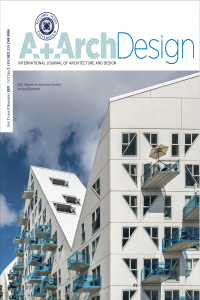Abstract
References
- Reference1 Wijetunga, C. S., & Sung, J. S. (2015). Valuing the Cultural Landscapes Past and Present: Tea Plantations in Sri Lanka. Landscape Research, 40(6), 668–683.
- Reference2 Phipps, A. (2019). Tea and Tourism. In Tea and Tourism.
- Reference3 Díaz-Andreu, M. (2017). Heritage Values and the Public. A Manual for Interpreting Community Heritage for Tourism. (n.d.). Journal of Community Archaeology and Heritage, 4(1), 2–6.
- Reference4 Nunta, J., & Sahachaisaeree, N. (2010). Determinant of cultural heritage on the spatial setting of cultural landscape: A case study on the northern region of Thailand. Procedia - Social and Behavioral Sciences, 5, 1241–1245.
- Reference5 Mitchell, N., Rössler, M., & Tricaud, P.-M. (2009). World Heritage Cultural Landscapes: A Handbook for Conservation and Management. In World Heritage Papers 26.
- Reference6 UNESCO. (2019). Operational Guidelines for the Implementation of the World Heritage Convention Ed. 2019. July, 167.
- Reference7 International Council on Monuments and Sites (ICOMOS). (2010) ICOMOS New Zealand Charter for the Conservation of Places of Cultural Heritage Value. ICOMOS New Zealand Charter, v, 1–11.
- Reference8 Jolliffe, L., & Aslam, M. S. M. (2009). Tea heritage tourism: Evidence from sri lanka. Journal of Heritage Tourism, 4(4), 331–344. https://doi.org/10.1080/17438730903186607
- Reference9 Hui, C., Dong, C., Yuan, Z., & Sicheng, M. (2019) Construction of Corridor of Architectural Heritage Along the Line of ZiJiang River in Hunan Province in the Background of the Tea Road Ceremony. IOP Conference Series: Materials Science and Engineering, 471(8).
- Reference10 Rössler, M. (2006). World Heritage cultural landscapes: A UNESCO flagship programme 1992 - 2006. Landscape Research, 31(4), 333–353.
An Interpretive Analysis on the Heritage Values and Morphology of Tea Cultural Landscape: A Case Study on Khakiachara Tea Estate, Sreemangal, Bangladesh.
Abstract
The Cultural Landscape of the tea garden is a metamorphosed expression of the natural landscape, which has evolved with time by setting up the tea industries in topographically suitable areas and influenced by the activities of the tea community. It is essentially a unique set of intangible and tangible features, which is not getting tourists' and researchers' perception due to lack of proper management. The study analyzes a territory in the Khakiachara tea garden, Sreemangal, and aims to showcase the existing natural and cultural setting of tea gardens by proposing an interpretive guideline. The major steps of this research are to identify the cultural landscape values by on-site survey and data collection, categorize them by audience perception analysis and develop a network of cultural landscape resources. The result of this study may provide a future management guideline, serve as a possible mechanism to maintain natural and cultural eco-system and boost economic development.
Keywords
Cultural landscape cultural heritage heritage values heritage preservation future management intangible heritage tangible heritage
References
- Reference1 Wijetunga, C. S., & Sung, J. S. (2015). Valuing the Cultural Landscapes Past and Present: Tea Plantations in Sri Lanka. Landscape Research, 40(6), 668–683.
- Reference2 Phipps, A. (2019). Tea and Tourism. In Tea and Tourism.
- Reference3 Díaz-Andreu, M. (2017). Heritage Values and the Public. A Manual for Interpreting Community Heritage for Tourism. (n.d.). Journal of Community Archaeology and Heritage, 4(1), 2–6.
- Reference4 Nunta, J., & Sahachaisaeree, N. (2010). Determinant of cultural heritage on the spatial setting of cultural landscape: A case study on the northern region of Thailand. Procedia - Social and Behavioral Sciences, 5, 1241–1245.
- Reference5 Mitchell, N., Rössler, M., & Tricaud, P.-M. (2009). World Heritage Cultural Landscapes: A Handbook for Conservation and Management. In World Heritage Papers 26.
- Reference6 UNESCO. (2019). Operational Guidelines for the Implementation of the World Heritage Convention Ed. 2019. July, 167.
- Reference7 International Council on Monuments and Sites (ICOMOS). (2010) ICOMOS New Zealand Charter for the Conservation of Places of Cultural Heritage Value. ICOMOS New Zealand Charter, v, 1–11.
- Reference8 Jolliffe, L., & Aslam, M. S. M. (2009). Tea heritage tourism: Evidence from sri lanka. Journal of Heritage Tourism, 4(4), 331–344. https://doi.org/10.1080/17438730903186607
- Reference9 Hui, C., Dong, C., Yuan, Z., & Sicheng, M. (2019) Construction of Corridor of Architectural Heritage Along the Line of ZiJiang River in Hunan Province in the Background of the Tea Road Ceremony. IOP Conference Series: Materials Science and Engineering, 471(8).
- Reference10 Rössler, M. (2006). World Heritage cultural landscapes: A UNESCO flagship programme 1992 - 2006. Landscape Research, 31(4), 333–353.
Details
| Primary Language | English |
|---|---|
| Subjects | Architecture |
| Journal Section | Research Article |
| Authors | |
| Publication Date | December 1, 2021 |
| Published in Issue | Year 2021 Volume: 7 Issue: 2 |
All site content, except where otherwise noted, is licensed under a Creative Common Attribution Licence. (CC-BY-NC 4.0)



